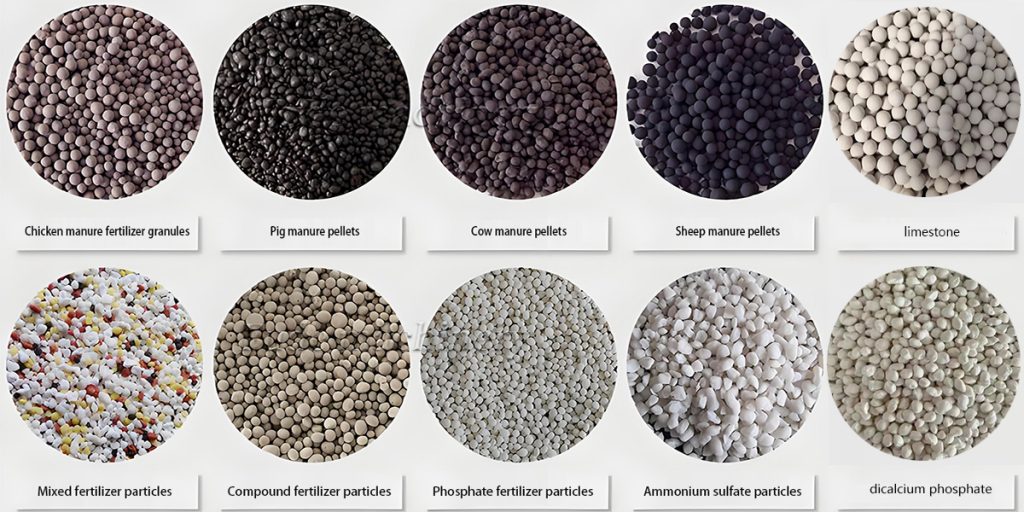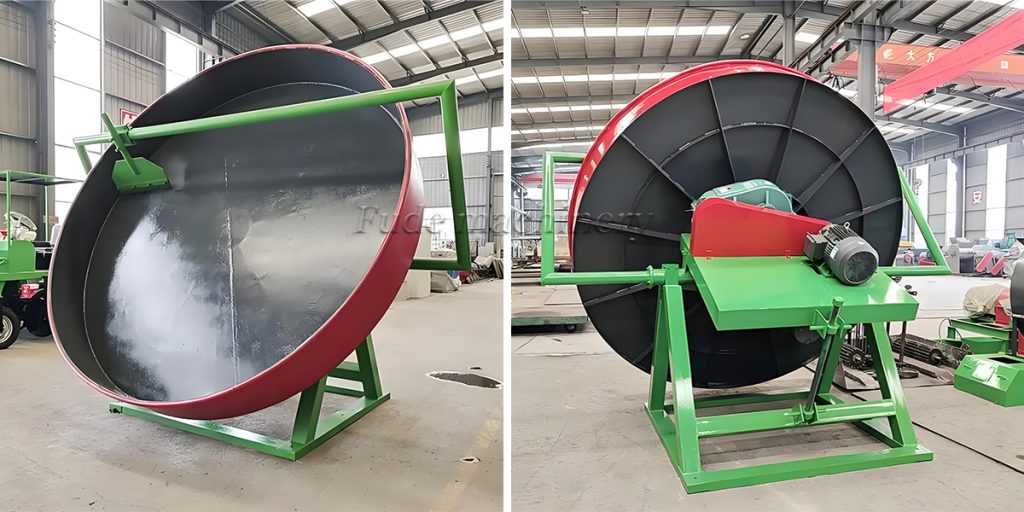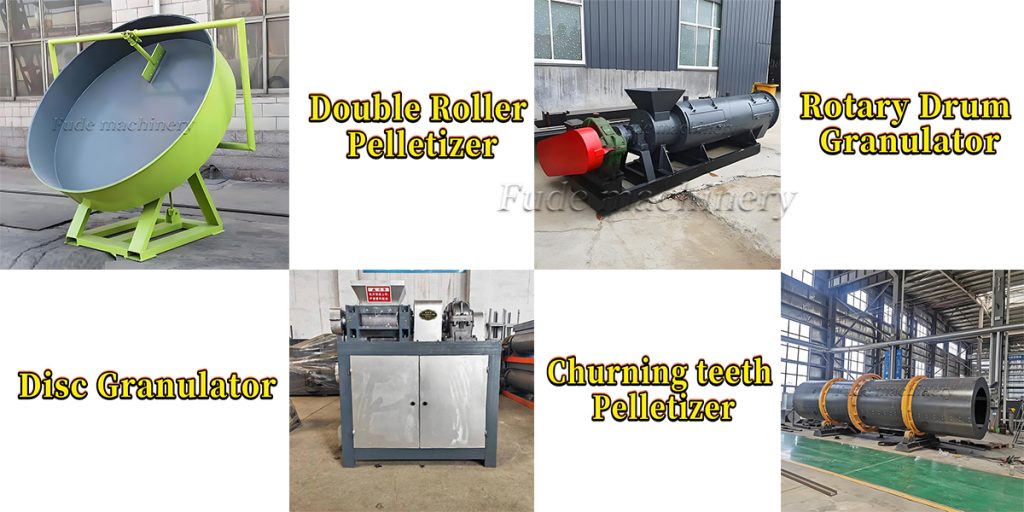Organic Fertilizer Companies: What Do Production Costs and Equipment Investment Mean?
193Understanding production costs and equipment investment is fundamental for any organic fertilizer company.
View detailsSearch the whole station
As an expert in organic fertilizer equipment, I talk to producers every day. A very common and important question I get is about the disc pelletizer. Clients show me their raw materials. They ask, “Is my material suitable for disc pelletizing?” They also want to know what challenges it can overcome. They ask, “What are the ‘difficult problems’ it can handle?” These questions get to the heart of making a smart investment. The success of your granulation process depends on matching the machine to your material. Not every material is perfect for a disc pelletizer. But this machine is excellent at solving specific problems that many producers face. I will help you understand if your material is a good fit. I will also explain the tough challenges a disc pelletizer is designed to solve.
Last Updated: June 2025 | Estimated Reading Time: 16 minutes
Recommended Image Filename: disc-pelletizer-material-suitability.jpg
This article will help you understand:

The suitability of your material for a disc pelletizer depends mainly on three things: particle size, moisture content, and composition. Getting these three factors right is the key to successful granulation. A disc pelletizer uses a method called “wet granulation.” This means it needs fine powder and some moisture to work correctly. It builds pellets layer by layer. This process requires the right starting conditions. If your material has these properties, the disc pelletizer will work very efficiently for you. It will produce high-quality, round granules. Let’s look at each factor in more detail.
The disc pelletizer needs a fine, powder-like material to work best. Think of it like making a snowball with fine snow versus icy chunks. Fine snow packs together smoothly. Icy chunks do not. The same is true for granulation. Your raw material should ideally be crushed into a fine powder. A particle size of around 50-80 mesh is often recommended. This fine consistency allows the particles to stick together evenly when water is added. It helps create dense, strong, and smooth pellets.
If your raw material is lumpy or has large particles, it will not granulate well. The pellets will be weak and irregular. This is why a crushing system is a vital first step. We often recommend a vertical crusher or a hammer mill. These machines can turn composted manure, straw, or other organic matter into the fine powder needed for the disc pelletizer. A consistent, fine particle size is the foundation for high-quality pellets.
Moisture is critical for a disc pelletizer. It acts as the “glue” that helps particles stick together. However, there is a “sweet spot” for moisture content. Too little moisture, and the powder will just tumble on the disc without forming pellets. Too much moisture, and you will get a sloppy, muddy mess instead of solid granules. The material will stick to the machine and be difficult to handle.
The ideal moisture content for most organic materials in a disc pelletizer is typically between 30% and 50%. This range can vary depending on the specific material. For example, composted chicken manure might need a different moisture level than processed sludge. Finding this sweet spot is key to efficient operation. You might need to add water if your material is too dry. You might need to pre-dry it if it is too wet. Controlling moisture is one of the main skills in operating the machine effectively.
The composition of your material also matters. A disc pelletizer works wonderfully with materials that have some natural stickiness or binding properties. Organic materials like animal manure, compost, and biosolids are excellent candidates. They contain organic compounds that become slightly adhesive when wet. This helps the particles bind together into strong pellets.
Some materials might not have enough natural binding ability. In these cases, you might need to add a binder. Binders can include things like clay, molasses, or lignin. Adding a small amount of a binder can greatly improve pellet strength and quality. At Fude Machinery, we can help you analyze your material. We can recommend if a binder is necessary for your specific production needs.
| Material Property | Ideal for Disc Pelletizer | Challenging for Disc Pelletizer | Your Practical Action |
|---|---|---|---|
| Particle Size | Fine powder (50-80 mesh) | Lumpy, large particles, fibrous | Use a crusher to get a fine powder. |
| Moisture | 30% – 50% | Below 25% or above 55% | Adjust moisture before granulation. |
| Stickiness | Some natural adhesiveness | Very dry, non-binding (like sand) | Consider adding a binder. |
| Impurities | Minimal (stones, plastic) | Many hard impurities | Use a screening machine first. |

A disc pelletizer is more than just a machine that makes pellets. It is a problem-solver for many organic fertilizer producers. It takes challenging raw materials and turns them into high-value products. Here are some of the common “difficult problems” it can handle for you.
Problem 1: Low-Value Dusty Powder
Organic materials composted and crushed into dusty powder are hard to handle, bag, and sell at a low price. A disc pelletizer turns this “waste” into clean, dust-free granules, easy to package and apply, boosting market appeal and price.
Problem 2: Need for Uniform Round Pellets
Many granulators make irregular pellets, but the premium market prefers spherical ones. A disc pelletizer’s tumbling action creates highly uniform, round pellets through self-classification, giving a competitive edge.
Recommended Image Filename: handling-difficult-problems-with-disc-pelletizer.jpg
Problem 3: Light and Fluffy Raw Material
Light, fluffy organic materials are costly to transport and store. The disc pelletizer compacts them into dense pellets, increasing bulk density by two or three times, cutting logistics and storage costs.
Problem 4: Even Mixing of Additives
Adding nutrients or microbes to powder is hard. The disc pelletizer’s tumbling action evenly incorporates additives into pellets, ensuring consistent nutrient profiles and balanced crop nutrition, better than simple powder mixes.
Yes, it is important to be honest about the machine’s limitations. A disc pelletizer is not the right choice for every material. Knowing this helps you avoid costly mistakes.
My goal at Fude Machinery is to ensure you get the right machine for your job. If a disc pelletizer is not the best fit, we will recommend a different solution from our wide range of equipment.

How can you be sure if your material will work? The best way is to test it. At Fude Machinery, we offer a process to help you determine suitability with confidence.
This testing service removes the guesswork. It gives you clear evidence before you make a major investment. It is part of our commitment to providing a complete, one-stop solution for your organic fertilizer production line .
Recommended Image Filename: testing-material-for-disc-pelletizer.jpg
Question 1: What if my material moisture is too high, like 60%?
If your material moisture is too high, you will need to reduce it before granulation. You can do this by mixing it with a dry material, like dry compost or biochar. You can also use a pre-drying process. This will bring the moisture down to the ideal 30-50% range.
Question 2: Can I pelletize a mix of different organic materials?
Yes, absolutely. A disc pelletizer is great for mixed materials. For example, you can mix chicken manure with straw compost. The key is to crush and blend them into a uniform powder before feeding them into the pelletizer.
Question 3: Do I always need to add a binder?
Not always. Many organic materials, like animal manure, have enough natural binding properties. You might only need a binder if your material is very low in organic matter or if you need extremely hard pellets for special applications. Our material testing can help you decide.
Question 4: Can the disc pelletizer handle fibrous materials like coconut coir?
Fibrous materials can be challenging. They must be crushed very finely. Long fibers can prevent proper pellet formation. A high-performance crusher is essential. For very fibrous materials, another type of granulator might be more suitable. We can advise you on this.
Determining if your material is suitable for a disc pelletizer is a critical step. The ideal material is a fine powder with a moisture content between 30% and 50% and some natural binding ability. If your material fits this description, a disc pelletizer can be a powerful tool for your business.
This machine is excellent at solving difficult problems. It transforms dusty, low-value powders into premium, spherical granules. It increases bulk density, reduces costs, and creates a highly marketable product. However, it is not the right tool for very dry or extremely sticky materials.
I strongly recommend you take advantage of our material testing service. This allows you to see the results for yourself before making a commitment. Investing in the right granulation technology is key to producing high-quality organic fertilizer and building a profitable business.
We are Fude Machinery, a leading Chinese manufacturer of organic fertilizer equipment. Our base is in Zhengzhou. We focus on B2B solutions. We offer a full range of organic fertilizer equipment. This covers composting, crushing, granulation, drying, cooling, and packaging. We also design complete production lines. Our facilities are well-equipped. We have strict quality control. We have exported our products to over 120 countries. Our team of 15 technical engineers ensures top-quality design and production for you.
Are you ready to find out if your material is perfect for a disc pelletizer? Do you want to solve the difficult problems in your production process? Contact our expert team today. Let’s discuss your material and arrange for a test.
Last Updated: June 2025
Understanding production costs and equipment investment is fundamental for any organic fertilizer company.
View detailsCompared to chemical fertilizers, chicken manure as an organic fertilizer improves soil structure
View detailsCow manure is a highly beneficial organic material that can be transformed into a nutrient-rich bio fertilizer.
View detailsA complete guide for chicken farms struggling with high moisture manure.
View details